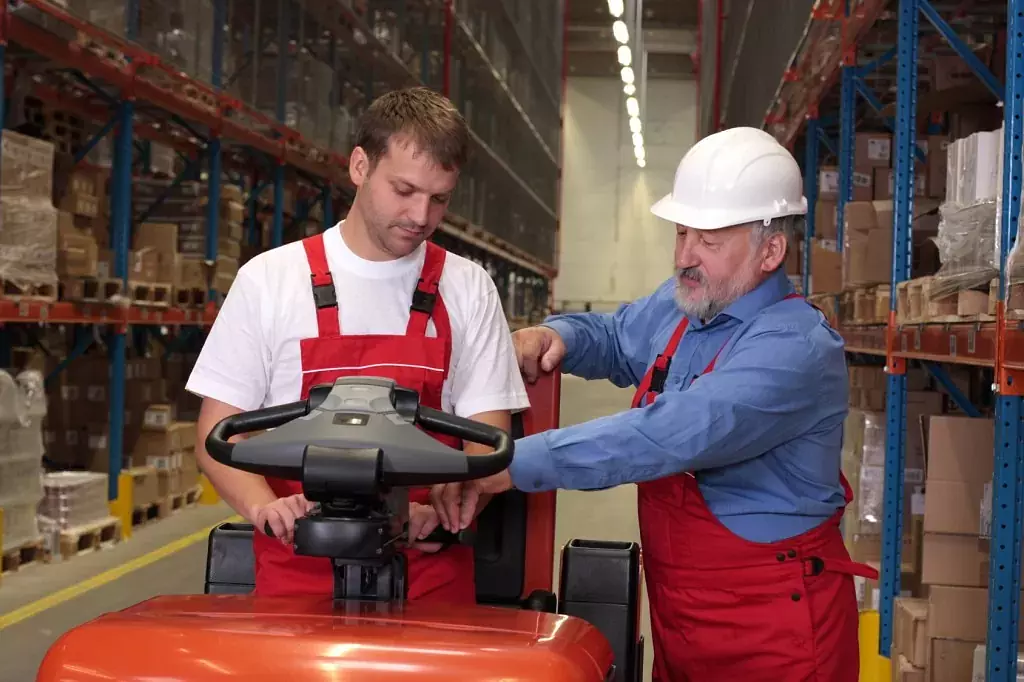 Forklift training is fundamental in material handling applications. Without proper forklift safety training, accidents and injuries would likely reach astronomical levels. However, continuous and ongoing training can improve the overall safety, productivity and efficiency of any workplace. Furthermore, there has never been a better time to learn how to use a forklift properly or brush up on skills. Integration of cutting-edge technologies has made it easier, cheaper and even more engaging for forklift operators. Here are some great tools any organization can use to train forklift operators in unique and robust fashion:
Forklift training is fundamental in material handling applications. Without proper forklift safety training, accidents and injuries would likely reach astronomical levels. However, continuous and ongoing training can improve the overall safety, productivity and efficiency of any workplace. Furthermore, there has never been a better time to learn how to use a forklift properly or brush up on skills. Integration of cutting-edge technologies has made it easier, cheaper and even more engaging for forklift operators. Here are some great tools any organization can use to train forklift operators in unique and robust fashion:
1) Computer-Aided Curriculum
With curriculum evolving into digital coursework, forklift training can now be offered online as well. From a logistical perspective, this makes scheduling and completion of required coursework easier and simplified; it can also be done from the comfort of home. Many forklift operations and safety training courses are internationally accredited and thus can be applied in a broad spectrum. Furthermore, these aids drive compliance and adherence to OSHA directives and narratives. OSHA is a governmental institution that sets the standard. In addition, OSHA also implements and updates safety practices across all material handling applications. As required, various computer-aided forklift operation classes are always up to speed with OSHA, assuring the highest level of safety awareness and skills retention.
2) Forklift Simulator
The future of operator training, the new forklift simulator allows both professional and novice drivers to strap up and sit in the driver seat without the stress of a live training. Forklift simulators are entirely safe to use and simulate a variety of material handling scenarios. As a result of this intense and comprehensive training, operators can enter live material handling situations with confidence, prepared for a variety of events that may occur throughout usage. Forklift simulator software is a spectacular and robust method of training, it integrates all the senses and puts users in a 3D environs where they are behind the wheel of a wide fleet of appliances in a realistic digital warehouse. The forklift simulator is perhaps the most sophisticated and engaging form of operational training technology. However, it’s always essential to keep in mind for the trainer and trainee that the real thing is far from a video game so when it comes to operate a forklift for real, it’s important to remember the fundamentals.
3) The CASTLE Model
The Castle Model is a new innovation designed to enhance forklift training even more. The “Capacity, Stability and Leverage Multifunction Model” was created to help trainees gauge the effect of capacity, leverage, and stability. This tool provides practical experience that cannot be gauged in computer aided curriculum or traditional safety videos but does not require use of an actual forklift. The hands-on interface features balance beams and load disks, which can be used to demonstrate the effect of heavy or bulk operations. The benefit of the CASTLE model is that it allows novice operators to gain expertise in making material handling mistakes without damaging equipment or inventory. A forklift simulator cannot provide this experience, as it is all virtual and simulated. The CASTLE systems apply practicum from physics and mechanical engineering in real-time. The experience offers another layer of education and is a one-of-a-kind approach toward training tomorrow’s drivers.
